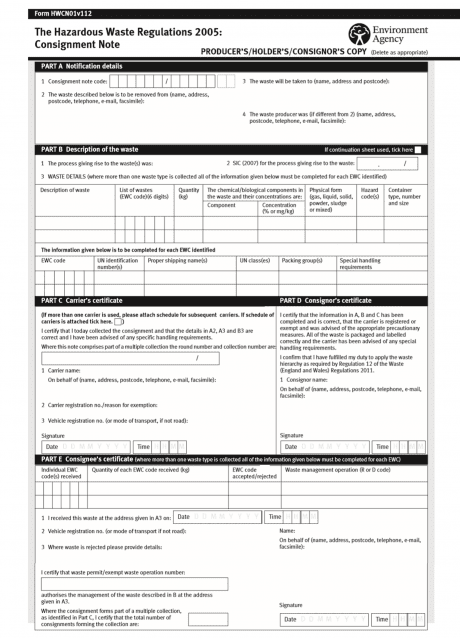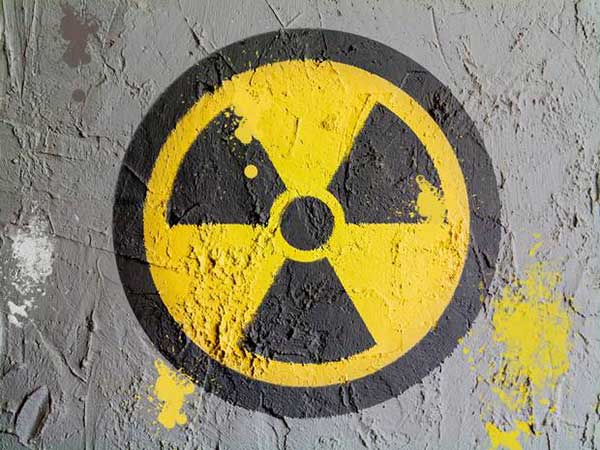A hazardous waste consignment note is just a more detailed Waste Transfer Note, because it covers the movement of waste from a commercial premises that contain hazardous material.
By law, any movement of waste should have relevant paperwork showing the Duty of Care in the form of a waste transfer note.
So basically, a hazardous waste (known as “haz waste” in the industry) consignment note is just a more detailed waste transfer note (WTN).
So a “haz waste consignment note” includes the basic info that is required for a WTN, but with extra details about the haz waste being disposed of, or recycled.
We provide emailed WTNs for any waste collections that require our Hazardous Waste Service.
Examples of hazardous waste types:
Fridges, monitors/ TVs, batteries, oil paint, fluorescent bulbs – to name a few of the obvious ones.
ALL WTNs and Hazardous waste notes include the following information:
- PRODUCER – normally this is the client – the person or organisation that has produced the waste. It must include full name and signature.
- CARRIER – eg: We Clear Junk Ltd is a registered waste carrier
- END DESTINATION – This is where the waste is being transported to.
- It also has the standard European Waste code for the item, for example“Fridges” would be 20 01 23
What’s the difference between a WTN and a Hazardous Waste Note?
The added details in a haz note that aren’t in a standard WTN relate to:
- the hazardous Code – eg: fridges include H3, H14, or monitors include H3, H5, H6 & H14.
- The state of the waste eg: (solid/ liquid/ gas etc) as well as some European packaging codes,
Whilst a WTN applies to whatever waste is being transferred from a producer to a carrier, the hazardous waste note applies ONLY to the hazardous waste. So…..
- a hazardous waste note can replace a WTN (if there is only hazardous waste, and no other general waste)
- But a WTN can’t replace a hazardous waste note if the movement of waste includes any hazardous items (like fridges, TVs/ monitors, Flouro bulbs, batteries, oil based paint to name a few).
Changes in Legislation:
For a long time, any commercial premises that disposed of more than 500kg of hazardous waste material per year required a “Premises Code”. Companies had to apply to the EA for or their own Premises Code for a charge of £18. But the law changed a few years ago, and premises codes are no longer required. We assume that it changed because it was overly cumbersome process, and didn’t serve its purpose.
We definitely saw “premises codes” as overkill. Even if the EA had resources to fully track, they seemed impossible to enforce.
IF anyone knows the reasons that aren’t mentioned below, PLEASE COMMENT BELOW!
Please reply with any comments or useful info. Whilst we know what is required of us to carry out our waste collection activities, we aren’t full circle legislation experts, so we are always keen to learn more!
If we can help with any hazardous waste collections – CLICK HERE
and ask about our hazardous waste service.
If you’d like to ask us a general question – CLICK HERE
Below shows an example of a hazardous waste consignment note:

For more info on Hazardous Waste Notes from the Gov website: CLICK HERE


